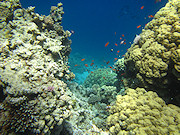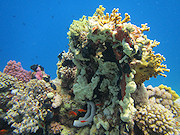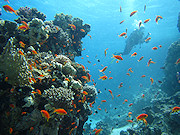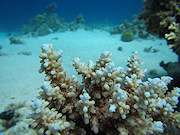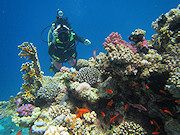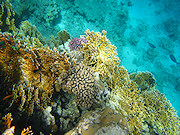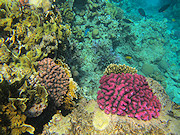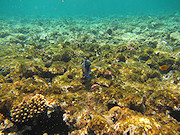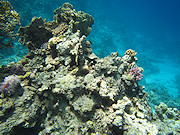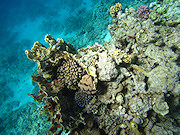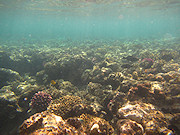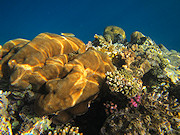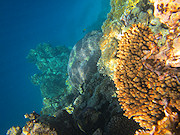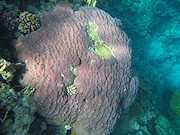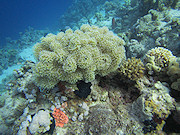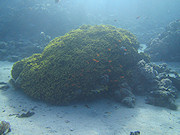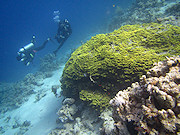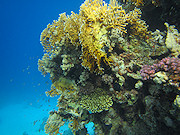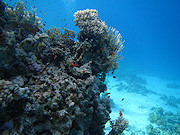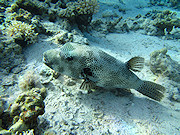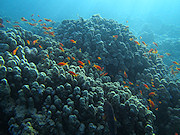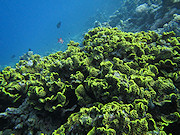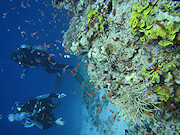Waterproof cameras test 2012 - part I
2. Canon PowerShot D20
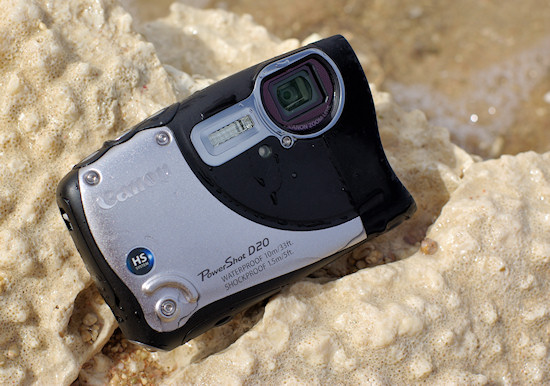 |
We had to wait three years for the Canon D20 – so much time passed from the launch of the D10 model, which took place in February 2009. The new model features a sensor with the same 12.1 Mpix resolution but it is no longer supported by the DIGIC IV processor with the iSAPS technology, like in the D10 . It didn’t prevented the implementation of Full HD 1920x1080 movie recording mode with a speed at 24 fps, though.
The producer decided to change the design of the casing completely – not it looks different, is bigger and heavier. The body of the Canon D20 measures 112.3×70.8×28 mm weighing 228 grams making it the biggest and the heaviest camera in our test. Despite that fact the waterproofness, compared to the older version, didn’t change – you can dive with this camera to a maximum depth of 10 meters.
Describing the D20 we must mention a completely redesigned optical path because the tested model boasts a completely new, stabilized lens with the focal lengths ranging from 28 to 140 mm and the apertures from f/3.9 to f/4.8. Also a much better LCD screen was used – its diagonal amounts to 3 inches, it features a resolution of 461 000 points and it has 5 levels of brightness correction. The new model was given a SDXC card slot and an HDMI output as well.
As you see all the changes moved with the times; we can only hope that during the diving the new model will perform as well as its predecessor.
Design and build quality
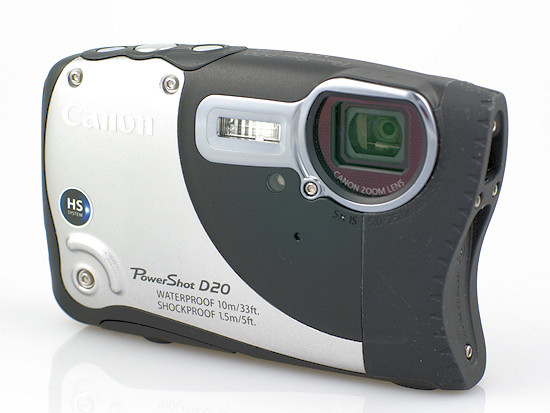 |
In the introduction we wrote that the Canon D20 is the biggest and the heaviest of all tested models. Fortunately its significant weight is balanced by a great build quality. The solidity of the materials the Canon body is built of is beyond reproach; in fact this camera could be hold up as a model in this category. After taking it into your hand you feel it is a solid, ruggedized construction made mostly of hard plastics. The front panel is an exception to this rule – you can find a metal element there which might be painted silver, turquoise or yellow. All elements of the body are tightly fitted, it remains rigid and nothing creaks. It is really curious that the producer declares the camera is able to withstand falls from only 1.5 metres; handling it you would bet it can endure much more.
The LCD screen protective window should be described in superlatives as well – it is hard enough not to bend even at a depth of 10 meters, where the pressure is two times higher than on the surface.
Please Support UsIf you enjoy our reviews and articles, and you want us to continue our work please, support our website by donating through PayPal. The funds are going to be used for paying our editorial team, renting servers, and equipping our testing studio; only that way we will be able to continue providing you interesting content for free. |
- - - - - - - - - - - - - - - - - - - - - - - - - - - - - - - - - - - - - - - - - - - - - - - -
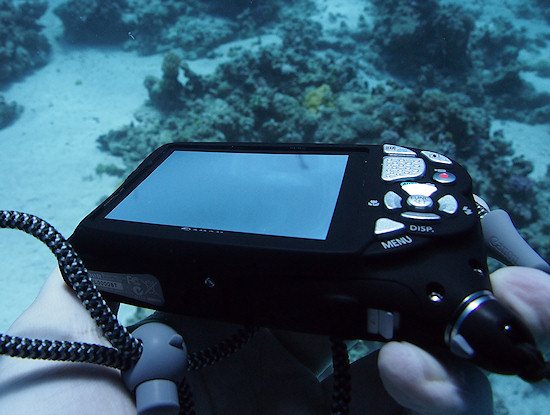 |
On the side panel you can find a cover hiding a USB 2.0 Hi-Speed and a mini HDMI port and a socket for am optional ACK-DC40 charger.
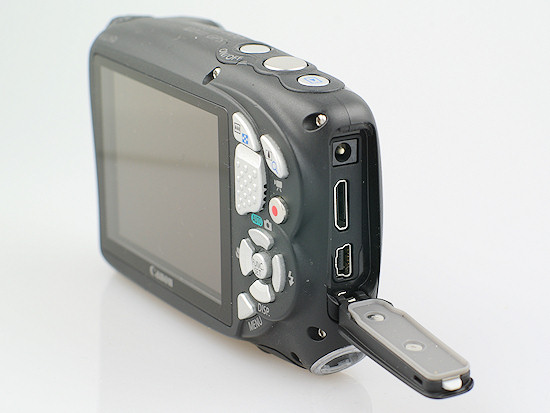 |
At the bottom the constructors put another o-ring sealed cover under which you can find a SD/SDHC/SDXC memory card and a lithium-ion NB-6L battery with the capacity of 1000 mAh.
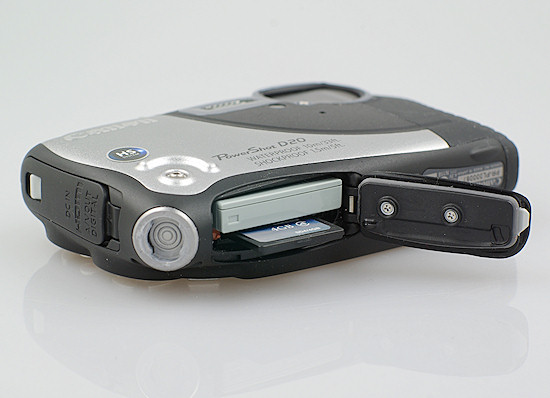 |
Unfortunately the opening of the covers is quite problematic because you need to apply some force. The producer, apparently aware of it, put special projections on the buckle of the wrist strap which are supposed to make the opening easier but, tested in real life, they don’t perform well. You have to have very hard nails to open these covers without any tools.
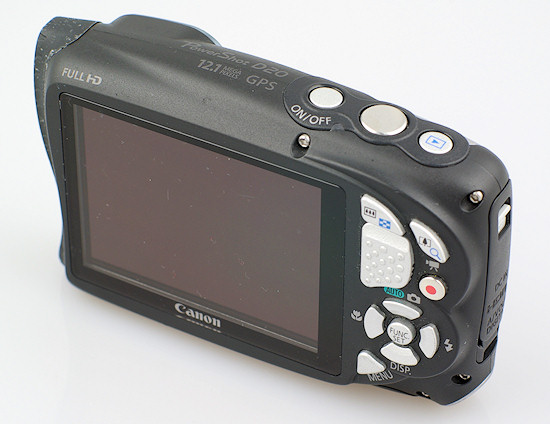 |
The button layout of the Canon D20 doesn’t remind that of the older model at all. On the upper panel there is a on/off switch, a shutter release and a playback button. All buttons on the back of the casing are situated to the right of the LCD panel. From top to bottom you have focus control buttons and image enlarging/reducing buttons in the display mode. Below there is a big, ribbed thumb inset and a movie recording button. Then you see a FUNC.SET button which confirms chosen options and starts the main menu. It is surrounded by a four-way controller which is also responsible for choosing the photographic mode, starting the macro mode, choosing the flash and info displayed on the LDC screen. At the very bottom you can find a MENU button which allows you to enter directly the main menu of the camera.
Use, cleaning, wear and tear
During every test we deliberately don’t rinse cameras after diving in fresh water to find out how easy it is to clean the salt residues later. If you are observant you certainly have noticed in several photos, posted above in this chapter some salt on the casing of the tested Canon that has stayed there since our trip to Egypt. It means the cleaning of the Canon D20 is not the easiest task. These hard, plastic elements, so praised before, like salt and different kinds of dirt so much they don’t want to let it go. It’s good to remember about thorough rinsing of the tested model after every salt water diving.Luckily the ruggedness of the components used to construct the Canon D20 is beyond reproach. After one week of intensive usage and quite long test ‘flights’ ended by the camera landing on quite sharp Egyptian sand there were hardly any scratches on the housing. The scratches on the LCD panel are very slight and damage on the casing – very superficial and practically invisible. A round of applause for the engineers for the choice of materials.
Additional functions
The list of additional functions the Canon D20 was equipped with is certainly not impressive – you can find just a GPS module which allows you to geotag your photos and also save location data once in a while so later you can chart your trail. The first time we tried to switch the GPS on we had to wait more than a dozen minutes before the receiver got the satellite signal but afterwards it took not more than several dozen seconds.The tested PowerShot boasts also a panoramic mode but it doesn’t put appropriate frames together on its own and you need to install some software, included in the product bundle, on your computer to do so.
Waterproofness
Describing the ruggedness and durability of the Canon D20 we wanted to clap and cheer but in the case of the waterproofness test the camera deserves a real standing ovation. The tested Canon simply outclassed its rivals here, allowing us to take photos at a depth of over 31 metres!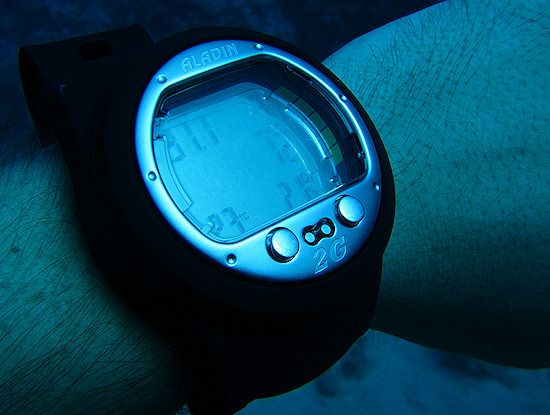 |
It is true that below 20 metres we had problems with the operation of the camera because most of the buttons were so squeezed by the column of water that they stopped working. Still the shutter release remained operational so you could take photos. At 31 m we even managed to start the movie recording but then the button got squeezed by water as well and remained blocked; the only way to stop recording was to press the shutter release. That way we could take photos again but we had to go up a bit to avoid the self-start of the movie recording mode; the aforementioned button was still pressed inside at 30 m. It was enough to return to a depth of about 25 m to see the situation returning to normal.
Below we present a movie recorded using the Canon D20 at almost 32 metres.
Underwater usage
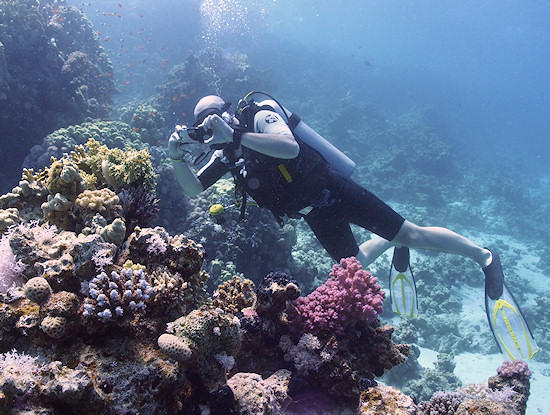 |
In order to change photographic modes in the Canon D20 there is a button with an icon of a camera situated over the FUNC. SET one. After pressing it you see a menu with horizontal icons corresponding particular programs or groups of programs. Additionally you can access some of them on the menu level where you choose from one of thematic modes. In the case of underwater photos you can set two modes: ‘Underwater’ or ‘Underwater macro’.
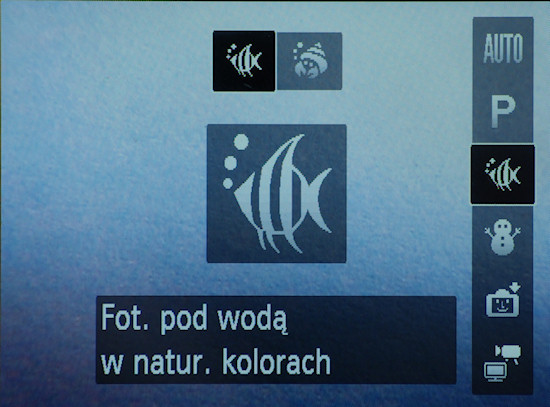 |
Switching between the modes is problem-free because you can navigate the menu without any delay and the arrow buttons are big and comfortable. Additionally under the FUNC. SET button you can find a quick menu which allows you to change the most important parameters of a given program very fast.
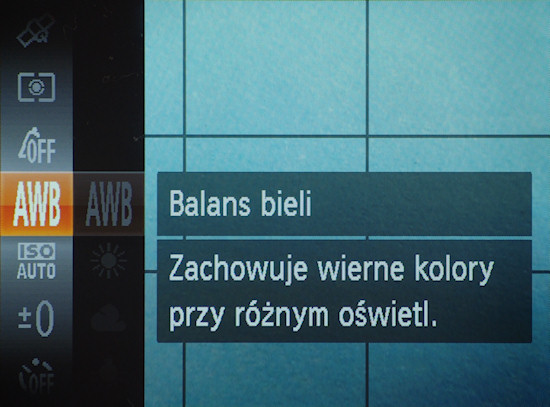 |
Unfortunately if you want to take a photo immediately after resurfacing you must switch off the underwater mode; otherwise the colours will be unnatural.
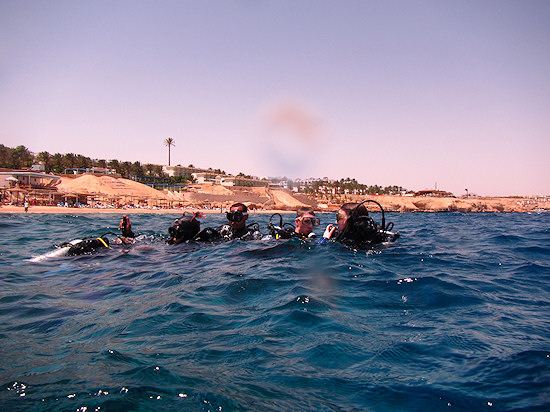 |
The camera operates swiftly and without any noticeable lags. The focus is set precisely in a split of a second, the recording of data on the memory card is very quick. Underwater, you won’t have major problems with operating this one. You can carp about the shutter release which first stop is barely perceptible and sometimes, when you only want to set the focus, you accidentally press to the end and take a photo as a result. The D20 housing is big and heavy so it works perfectly well below the surface, where you can handle it with confidence. Unfortunately the producer decided to use zoom buttons. In our opinion a slider positioned on the upper panel would be far more handy in underwater cameras as you often use two hands to hold them. Your thumb is positioned on the bottom panel and you don’t have to move it in order to change the focal length, you can use your index finger for that. When you deal with buttons, the whole operation becomes a bit more demanding.
We found it a bit puzzling at first why the producer made a special macro photography mode available when there is a special button, which is designed to change the AF mode and marked with a macro icon, on the body of the camera as well. It turned out that after choosing the underwater photo mode instead of AF Macro mode we get a quick focus mode on objects in the distance of about 3 m. The instruction manual recommends aiming the camera at the subject you want to photograph, half press the shutter release, and then fire when you see the moment is right. Taking into account the fact that the same can be done in the AF mode and with focus confirmation to boot (in the fast AF mode after setting the focus a frame on the LCD panel doesn’t become green) and, additionally, the first stop of the shutter release is barely felt such a function can be considered useless. In our opinion the constructors could have dispensed with the additional underwater macro photography mode just leaving the AF Macro function under the appropriate button, dedicated to it.
A 3-inch LCD screen, used in the tested model, has a 461,000-pixel resolution which, combined with a good performance against bright sunlight , makes this camera a joy to use no matter the conditions.
Like the previous model, this camera comes with a wrist strap with a clip and, although it can be attached to just one corner of the casing ( in the D10 you could attach it to all four corners, depending on your preference) we must admit it works perfectly well. You don’t have to worry your camera might slip out of your hand during a diving session.
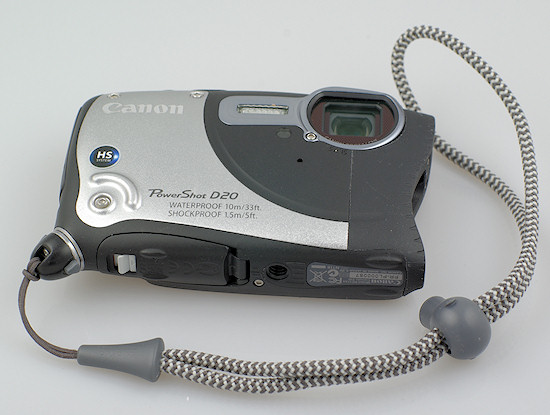 |
Quality of underwater photos and movies
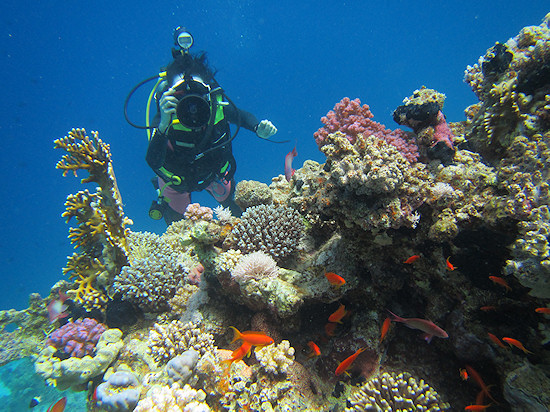 |
When we went out of water after the first diving we enjoyed the quality of photos taken by the Canon D20 a lot – on its LCD screen they looked really impressive. The spell was broken after we saw them on a computer screen. It turns out the Canon has huge problems with the contrast which sometimes decreases drastically. It happens not only when the Sun is situated near the frame but also when it is far from the frame itself and only scattered light reaches the lens. As a result the photos lose a lot and only at greater depths you don’t have to deal with this issue.
Canon equipped the tested model with one dedicated underwater photo mode. At greater depths it performs very well because the colouring surpasses even the photographs taken with the Panasonic, always praised by us in this category. Unfortunately in the photographs taken during snorkeling the contrasts are too high and colours - unnatural.
In the Macro mode the Canon performs very well. The reproduction scale, possible here, means you can get a close-up and if you put the camera closer to the photographed subject you won’t be plagued with the contrast decrease and you can get excellent quality photographs as a result. The colouring of images taken in a lake is also far from perfect. The photographs feature a distinct green dominant but, fortunately, you can eliminate it adjusting the white balance – a function the D20 boasts. However once again you experience the problems with contrast decrease and as a result the photos appear slightly foggy.
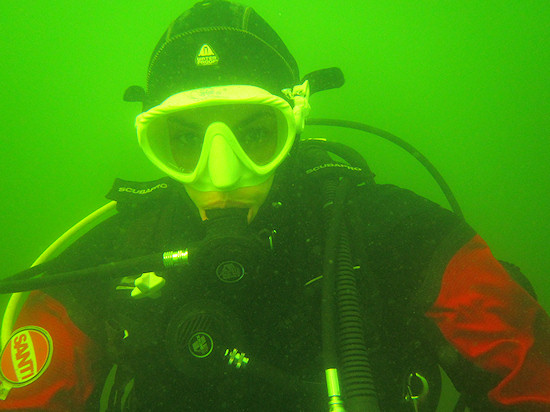 A photo taken in the underwater mode without the white balance adjustment. Click to enlarge. |
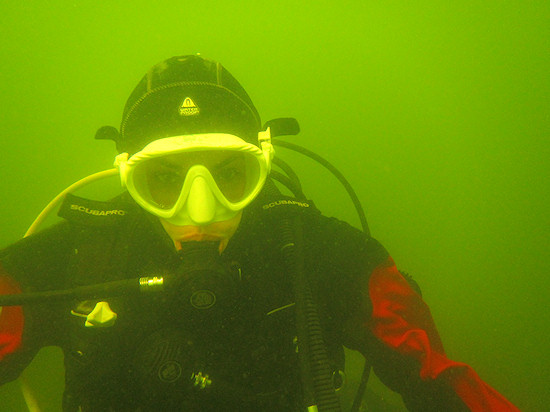 A photo taken in the underwater mode with the white balance adjusted toward the red. Click to enlarge. |
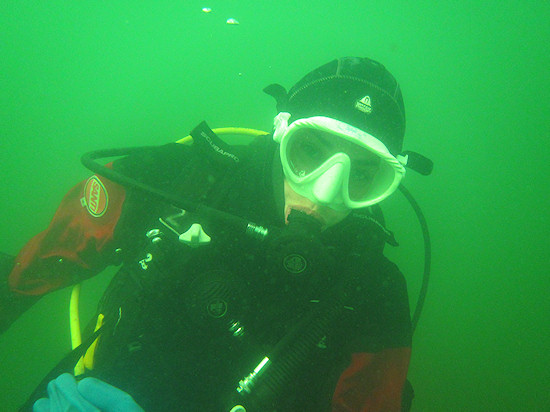 A photo taken in the underwater mode with the white balance adjusted toward blue. Click to enlarge. |
The quality of underwater movies, shot by the Canon D20, can be only praised. When we record a movie at greater depths the colouring is fantastic - no other of the tested model even partially approaches such the level offered by the PowerShot. The colouring of movies recorded during snorkeling is also great but sometimes you get a frame with a pink cast on a close distance fragment of the coral reef– apparently the camera didn’t manage to adjust the white balance in time. The number of details of Canon D20 movies is beyond reproach and it can be considered a model to be followed. A round of applause!
Summary
First, let’s glance at the list of pros and cons of the tested camera.-
Pros:
- Possibility of taking photos at a depth of over 30 metres,
- Very solid workmanship,
- Quick operation of the camera,
- Very fast and accurate autofocus,
- Wrist strap with a clip,
- Right weight of the camera, performing nicely under water,
- Very good image colouring at greater depths (5-10 m),
- Great Macro mode,
- Rigid and durable LCD screen protective window,
- Possibility of white balance adjustment in the underwater mode,
- Sensational movie colouring at greater depths,
- Sensational movie colouring shot during snorkeling,
- Great detail rendering on underwater movies.
- Images very prone to contrast loss,
- Photos taken in shallow water have unnatural, too saturated colouring,
- Difficult to clean,
- Weak picture colouring in green water,
- Wrong colouring of photos taken on dry land in the underwater mode,
- Significant size of video files.
Cons:
After every underwater cameras test we hope this time we finally are going to find a perfect device, easy to operate, great to use during snorkeling and diving alike. Unfortunately, although at the beginning the Canon D20 gave us some hope it might be the camera we are looking for, after seeing the photos taken right under the surface the spell broke. It is certainly not a camera for snorkeling fans but a recreational diver (certified to dive up to a depth of 40 m/140 feet) can’t pass the tested PowerShot indifferently because for the price of about 1,300 PLN you can get a camera comfortable to use which won’t let you down even at a depth over 30 m and will allow you to take good shots there. What’s more, in the movie recording mode the D20 is simply unparalleled, becoming an obligatory piece of equipment for every recreational diver.
Sample underwater movies
| H.264 MOV, 1920×1080 pix, 24 kl/s, 14 s, 58.9 MB |
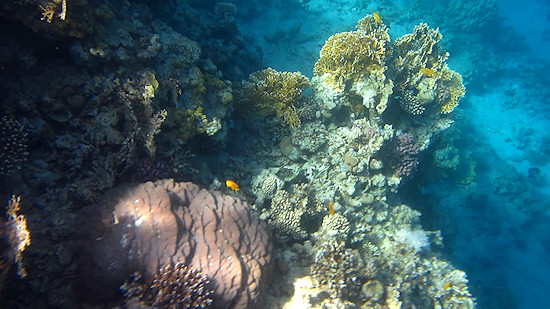 |
| H.264 MOV, 1920×1080 pix, 24 kl/s, 14 s, 62.3 MB |
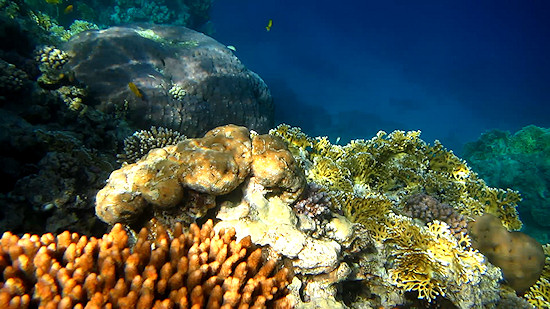 |
| H.264 MOV, 1920×1080 pix, 24 kl/s, 14 s, 60.4 MB |
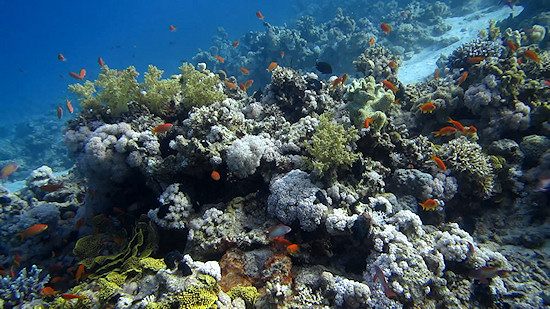 |
| H.264 MOV, 1920×1080 pix, 24 kl/s, 23 s, 100 MB |
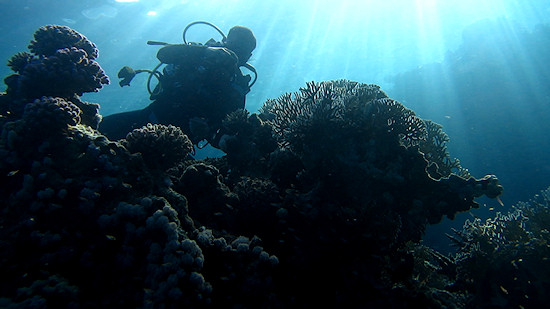 |
Sample underwater photos




